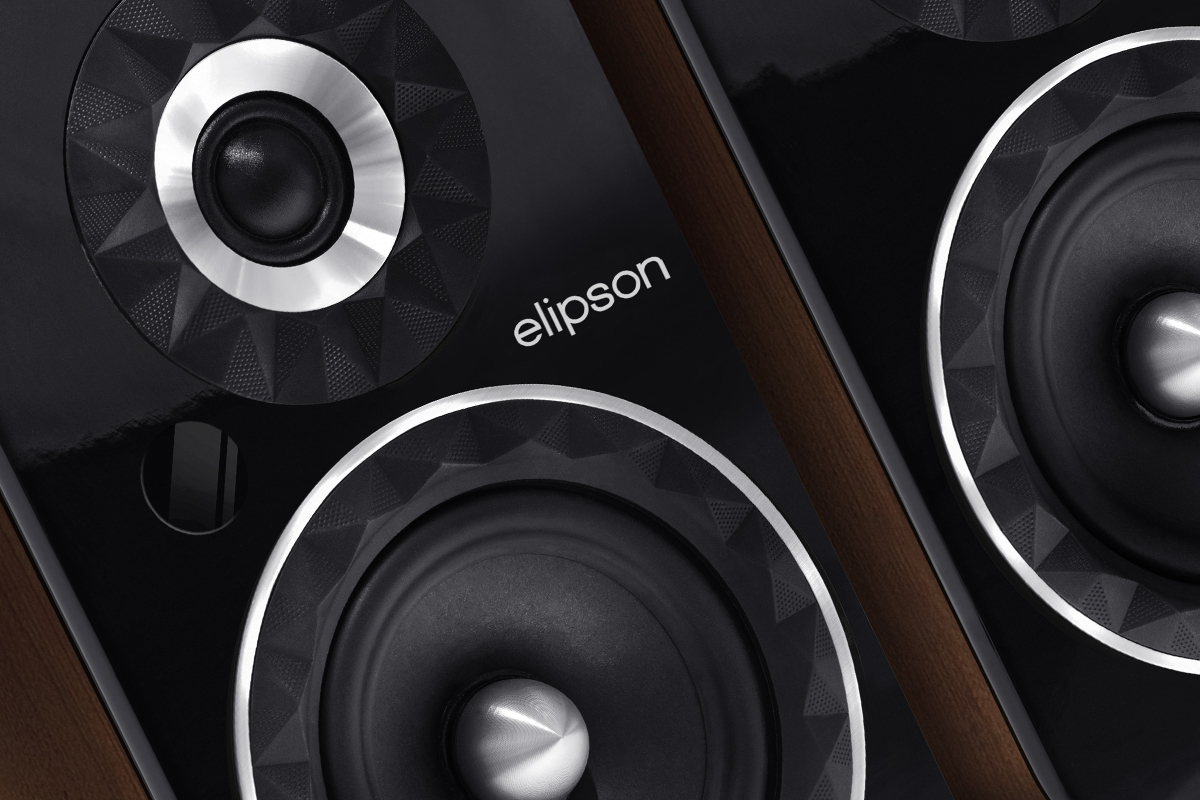When I first got into this hobby, a half-century ago, a common entry point was a starter system comprising a base-model stereo receiver, a basic turntable, and a pair of bookshelf speakers. For a system with junky house-brand speakers, you’d pay $250 to $300 (all prices in USD except where noted), or $400-plus for a system with name-brand speakers—say, a pair of Dynaco A25s or EPI 100s.
Fifty years later, you can still assemble a nice starter system comprising a receiver or amplifier, passive speakers, and a source component or two for a reasonable price; but now there are many other options. One of these is a powered speaker system, where the amplifier and other electronics are built into one of the enclosures. Several such systems have been reviewed on SoundStage! Simplifi in recent years, including Elac’s Debut ConneX DCB41, Kanto Audio’s Tuk, PSB Speakers’ Alpha AM3 and Alpha AM5, Q Acoustics’ M20 HD, Totem Acoustic’s Kin Play and Kin Play Tower, and Triangle’s Elara LN01A and Borea BR03 BT.
This month, I’m adding another powered speaker system to that list. Priced at $699, from the French brand Elipson, the Prestige Facet 6B BT is a two-way, rear-ported design with a 70Wpc class-D amplifier built into one of the speakers.
Like all the other systems I’ve mentioned, the Elipson has built-in Bluetooth, which makes it an attractive proposition for people who have been listening to music through smartphones and headphones and now want to discover the joys of high-fidelity, out-loud listening. Just pair your smartphone with the speakers and start streaming. If you want to hook up a turntable, disc player, or game console, you can do that, too.
Description
The Prestige Facet 6B BT is sold as a system comprising a primary speaker that contains the amplifier and other electronics, and a conventional passive speaker—the secondary speaker. Each speaker measures 6.9″W × 11.7″H × 8.8″D, including grille. The primary speaker weighs 15.4 pounds and the secondary weighs 12.4 pounds. Judging from the simple knuckle test I performed, the cabinets, which are constructed from 0.7″ MDF and internally braced, are impressively inert.
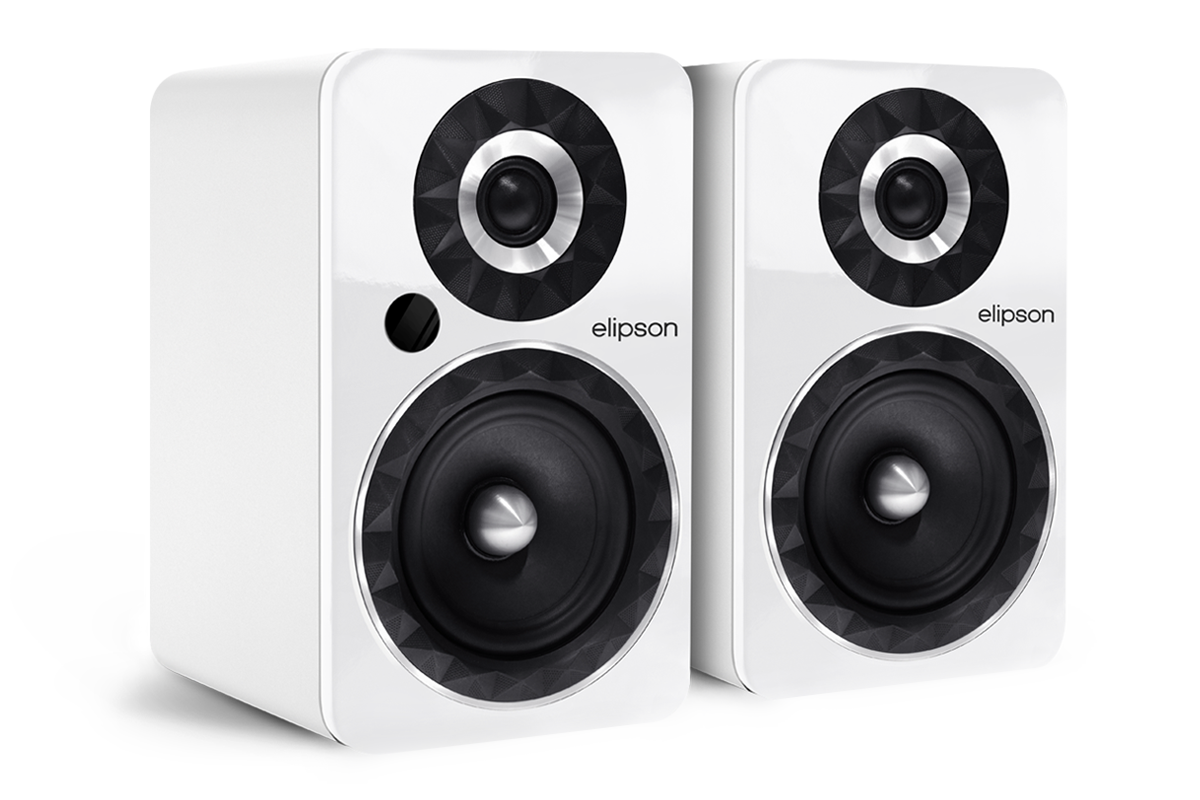
The system is available in vinyl finishes of black, white, or walnut. My review sample had the black finish. I found the finely pebbled texture on the top, bottom, and sides quite attractive. The front baffle has a high-gloss finish—white on the white model, black on the walnut and black models. Elipson supplies a pair of magnetically attached, black-cloth grilles with the system.
Each enclosure contains a 5.5″ cellulose-pulp midrange-woofer with a rubber surround, crossed over at 2.8kHz using third-order filters to a 1″ silk-dome tweeter. The midrange-woofer has a bullet-shaped phase plug at the apex of the cone; this limits turbulence and reduces distortion, Elipson says. Both drivers are surrounded by a ring of sculpted, rubbery material. Specified frequency response is 57Hz–25kHz, ±3dB.
The secondary speaker is identical to Elipson’s Prestige Facet 6B, a passive design. It even has separate terminals for the midrange-woofer and tweeter to enable biamping and biwiring. Out of the box, the terminals are jumpered for connection with a single, two-conductor speaker cable, which of course is how it is intended to be connected to the primary speaker.
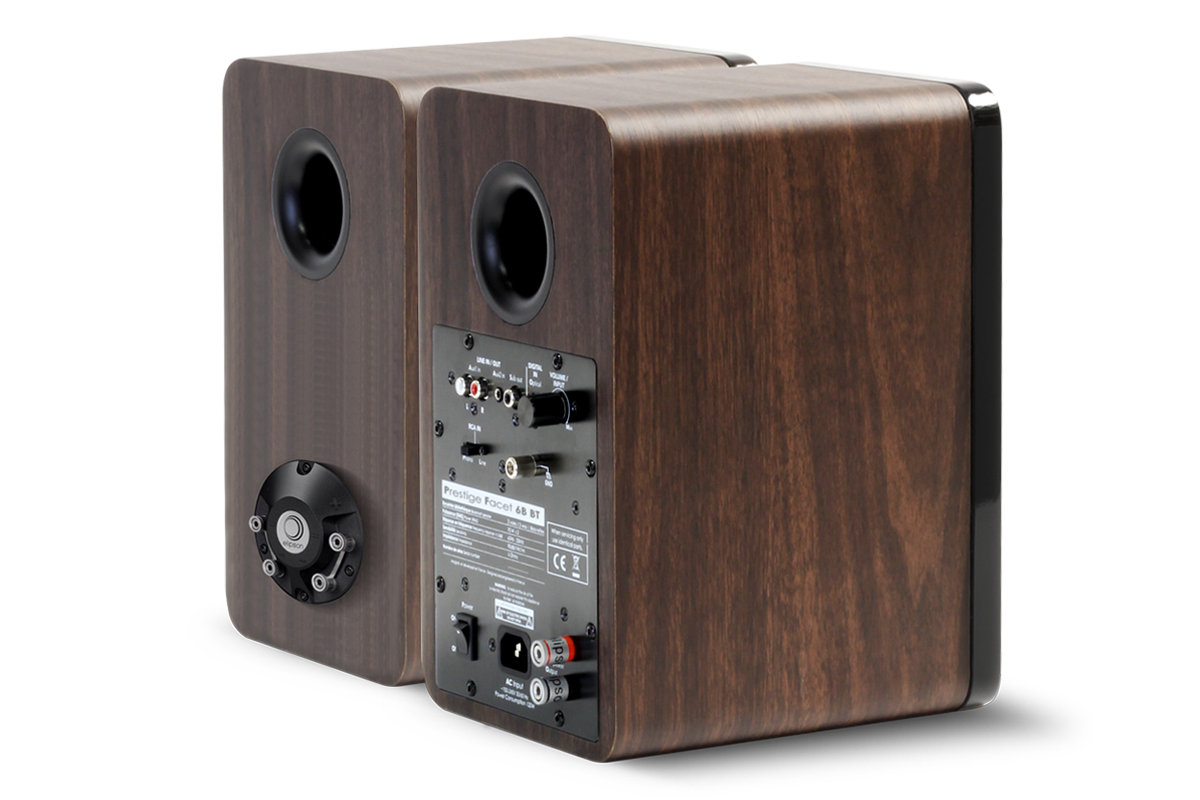
From left to right at the bottom of the electronics module on the primary speaker are a master on/off switch, the three-prong IEC power inlet, and a pair of binding posts for connection to the secondary speaker. The terminals on both speakers accept banana plugs, spades, or bare wire. Elipson supplies a 3m (9.8′) speaker cable, which is stripped and tinned at both ends, for connecting the secondary speaker to the amplifier output on the primary speaker. The polarity markings on the cable are extremely faint, so it’s easy to wire the speakers out of phase. The primary speaker is used for the left channel and the secondary speaker for the right. Channel designation cannot be changed, which may be an issue for users whose source components are located near the right speaker.
On the top of the electronics module on the primary speaker is a row of inputs: a pair of RCA input jacks that can be set for phono or line-level operation by means of a slider switch; a 3.5mm stereo line-level input; an RCA subwoofer output jack, which has a low-pass filter at 200Hz; and an optical S/PDIF (TosLink) input. To the right of the inputs is a rotary volume control, which also functions as an input selector and Bluetooth pairing button. A ground terminal for use with a turntable is also provided.
The small, plastic remote control included with the system has on/off, source-select, play-pause, mute, bass up/down, treble up/down, and volume up/down functions. The Reset button on the top right restores the bass and treble settings to flat.
Listening
I placed the speakers on sand-filled 26″ stands on either side of the electric fireplace in our small living room. The speakers were 7′ apart, tweeter to tweeter. Their back panels were 18″ from the front wall and their front baffles 7′ from my listening position on the end cushion of our sectional sofa on the opposite wall. For digital playback, I paired the Elipson system with my Google Pixel 4a 5G smartphone and confirmed that the phone was using the high-quality aptX codec. For analog playback, I connected my Pro-Ject Debut Carbon Evo turntable ($599 with Sumiko Rainier cartridge, $869 CAD with Ortofon 2M Red cartridge).
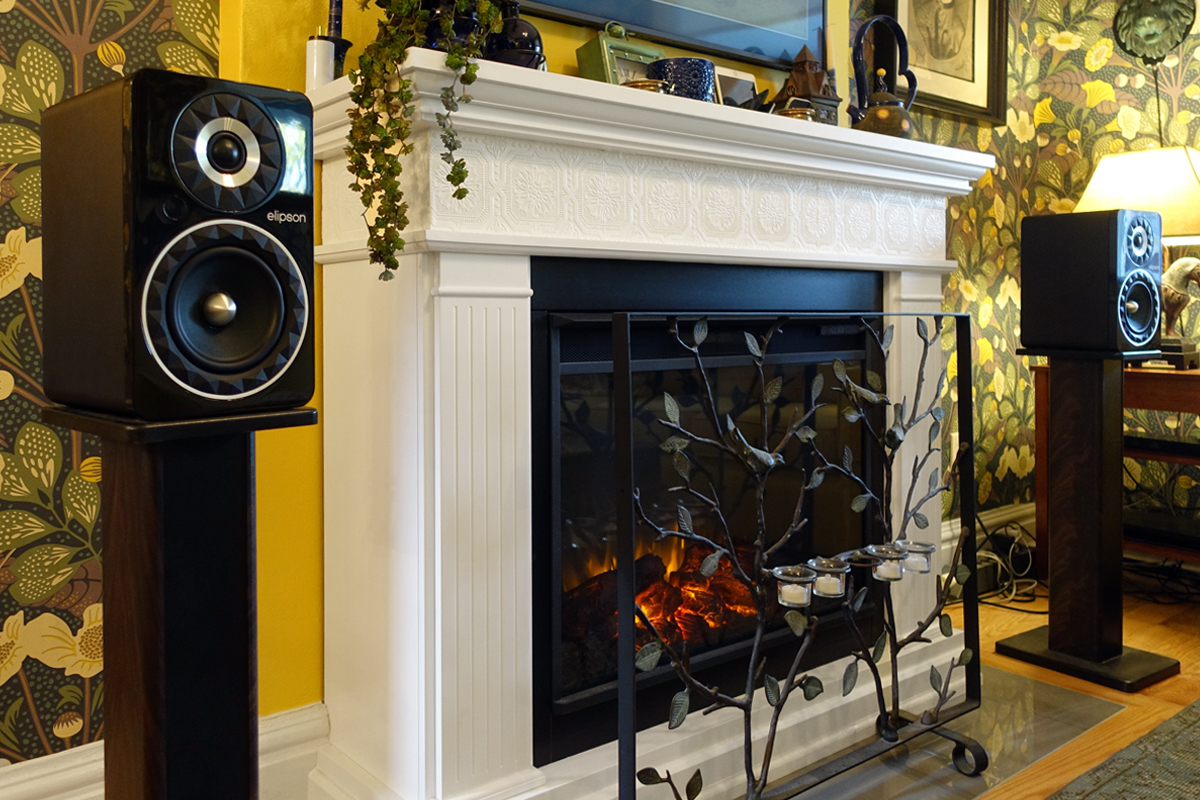
Given this system’s origin, it seemed appropriate to start with what is probably the best-known orchestral work by a French composer: Maurice Ravel’s Boléro. In the Qobuz app on my Google smartphone, I cued up a recording of the work by Les Siècles, a Paris-based ensemble that plays on period instruments, led by François-Xavier Roth (24-bit/96kHz FLAC, Harmonia Mundi / Qobuz).
In the quiet opening passage, I was greeted by exquisitely transparent sound. The Elipson system threw a wide, deep soundstage, with individual instruments locked in place. The bowed notes of the period violins had wonderful texture, and the timbres of the clarinets, oboes, saxophones, and other woodwind instruments were very convincing. Detail was excellent, so that it was easy to follow the insistent rat-a-tat beat on the snare drum that punctuates the entire work.
However, as the piece grew in intensity, the limitations of this compact system became apparent. The violins acquired a slightly steely edge, and the big kettle drum in the later sections lacked body. It wasn’t quite missing in action, but it was not nearly as prominent as it should have been. Given the -3dB point of 57Hz, I was not surprised by this. By the end of the piece, with the whole orchestra going full-bore, the presentation became rather congested. If I goosed the volume to try to hear something close to concert-hall levels, the sound became rather strident.
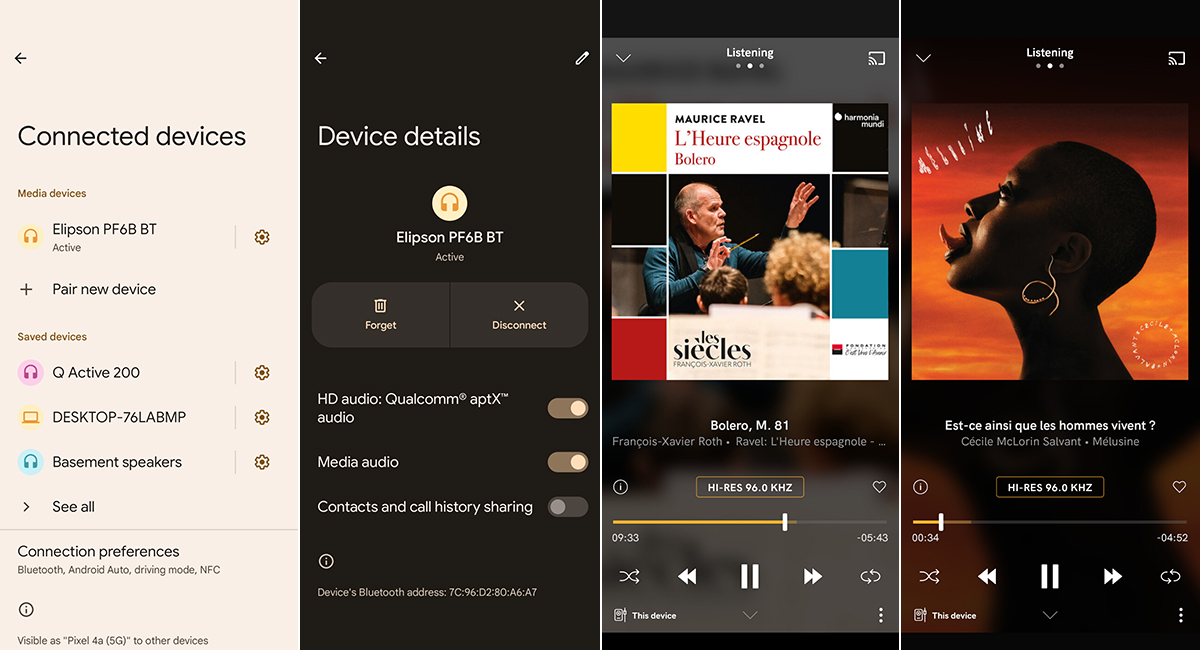
Continuing with my French theme, I streamed “La route enchantée” from Mélusine, the most recent album by the extraordinary American jazz singer Cécile McLorin Salvant (24/96 FLAC, Nonesuch Records / Qobuz). As it had done for the Ravel recording, the Elipson system threw a huge, transparent soundstage—it was as if the speakers weren’t there at all. The double bass and floor tom had wonderful palpability, with fast transients followed by delicious decays. However, the lowest notes of Paul Sikivie’s double bass were a little faint. The cymbals had gorgeous metallic clarity, but I found the hi-hat a bit sizzly.
I loved the way the Elipson system portrayed Aaron Diehl’s expressive touch on the piano; leading edges were precise but not exaggerated, so that rolled chords were beautifully resolved. McLorin Salvant’s voice was very convincing through most of the track, but the Elipson system seemed to exaggerate the breathy technique she uses in some phrases. And when McLorin Salvant belts it out at the end of the song, her voice became a bit strident.
Time for some vinyl. I noticed right away that the phono stage was very quiet. With the volume set moderately high, and the turntable spinning but the cue lever up so that the stylus wasn’t on the record, I could hear very faint noise with my ear a few inches from the tweeter of one of the speakers. Further away, noise was inaudible.
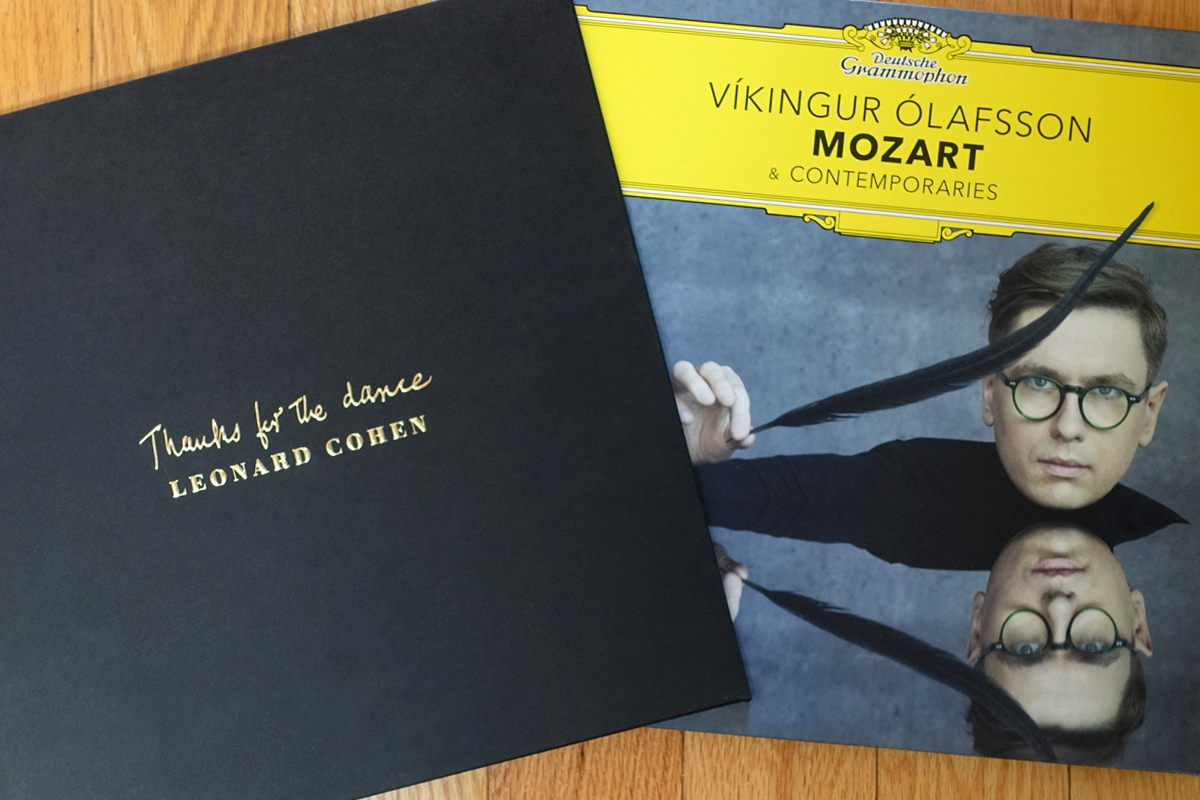
On Mozart’s Piano Sonata No. 16 “Sonata facile” from Mozart & Contemporaries by Icelandic pianist Víkingur Ólafsson (Deutsche Grammophon 486 0526), the sound of Ólafsson’s instrument was completely divorced from the speakers, appearing on a soundstage with impressive height and depth. The decay of the piano into the reverberant acoustics of Reykjavík’s Harpa concert hall was convincingly portrayed. The Elipson system precisely tracked Ólafsson’s trills and runs in the first movement and his gentle legato phrasing in the second movement, making it easy to admire his touch and expressive dynamics. However, some notes in the upper-middle octaves sounded hard—almost piercing at times.
Next up was “Happens to the Heart,” from Leonard Cohen’s posthumous album Thanks for the Dance (Columbia 19075978661). As with every selection I played, each aural object was precisely located on a wide, deep soundstage. Detail was excellent. I could hear Javier Mas’s fingers striking and pulling strings on the Spanish laúd and the ensuing rich, woody resonance. The sound of Michael Chaves’s electric bass guitar was surprisingly robust for speakers of this size. The evocative notes from Zac Rae’s felt piano appeared on the far-left side of the soundstage, as if by magic. Cohen’s voice was firmly anchored in the left center. Every nuance of expression, every hoarse rasp, every weary exhalation was compellingly portrayed. But his sibilants were slightly hot, and the raspiness in his voice was slightly exaggerated, so that it sounded a little edgy.
Comparisons
I compared the Prestige Facet 6B BT with a powered speaker system from another French brand—Triangle’s Borea BR03 BT ($799). The feature set of the Triangle system is almost identical to the Elipson’s: two analog inputs (one of which has a switchable MM phono stage), optical and coaxial S/PDIF inputs, subwoofer output, and Bluetooth connectivity. However, the fit and finish of the Elipson system was much nicer than the Triangle’s. The Borea system has a 6.5″ midrange-woofer in each enclosure, and those enclosures are about two times the volume of the Elipson system’s enclosures.
So, not surprisingly, the sound of the piano on Mozart & Contemporaries was bigger and fuller through the Triangle system. While the Elipson had more crystalline clarity up top, it sounded a little lightweight compared to the Triangle. The Elipson created a deeper soundstage than the Triangle system, and conveyed Ólafsson’s exquisite dynamic shading a tad more clearly. The stridency I noticed on the Elipson system was not evident on the Borea BR03 BT.
On Cohen’s “Happens to the Heart,” Chaves’s acoustic guitar and Mas’s Spanish laúd sounded fuller and warmer on the Triangle system, but Chaves’s bass guitar sounded boomier and Cohen’s voice sounded chestier. While Cohen’s expressive nuances were more evident through the Elipson system, I think the Triangle was more faithful to the recording.
I also compared the Prestige Facet 6B BT to SVS’s Prime Wireless Pro ($899.99), a two-way, rear-ported design with a 5.25″ polypropylene midrange-woofer and 1″ aluminum-dome tweeter. Unlike the Triangle and Elipson powered speaker systems, the Prime Wireless Pro is an active system. It has dedicated amplifiers for the midrange-woofer and tweeter in each speaker, and a DSP-based crossover that comes before the amplifiers in the signal path. The Prime Wireless Pro also has a built-in network streamer, based on DTS’s Play-Fi platform.
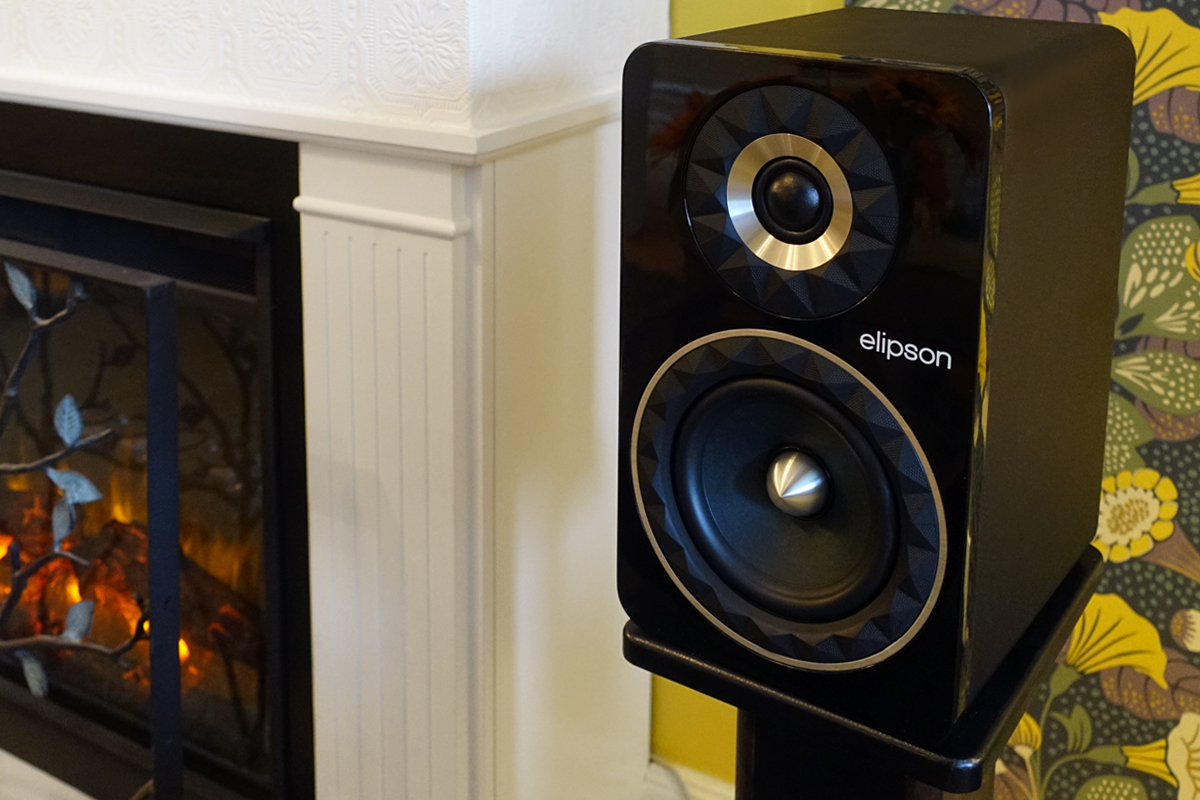
I streamed music to the SVS system from the Qobuz app on my Google Pixel smartphone via Chromecast. This meant that the Elipson system was receiving lossy, compressed audio, while the SVS system was receiving a lossless 24/48 stream.
On McLorin Salvant’s rendition of “La route enchantée,” the spatial presentation was larger and more transparent on the Elipson system than it was through the SVS. The lowest notes of Sikivie’s double bass had a little more body through the SVS speakers, but these notes were better controlled and less boomy on the Elipson system. I noticed the same difference on the low-octave piano notes. The breathy character of some of Salvant’s phrases was not exaggerated on the SVS system the way it was through the Elipson. Through the SVS, McLorin Salvant’s voice sounded fuller and more embodied—it had a slightly papery character on the Elipson system.
On Ravel’s Boléro, the sound of the woodwind instruments in the opening sections was fuller and richer through the SVS system. The clarinet sounded riper and fruitier through the SVS, and reedier through the Elipson; the violins sounded less steely on the SVS system. The rat-a-tat snare drum had more body through the SVS system, but sounded crisper through the Elipson. I could hear the kettle drum during the concluding portions more clearly on the SVS speakers. Dynamics were less compressed on the SVS system. Played at moderately high levels, the big conclusion sounded a little strident on the SVS, but less so than it did through the Elipson system.
Conclusion
Elipson’s Prestige Facet 6B BT could function as a great starter system for many listeners. The value proposition is certainly compelling. A half-century ago, you’d have had to pay $250 or so for a starter system with no-name speakers. That translates to about $1700 today—almost 2.5 times the price of the Elipson system. Hi-fi has come a long way.
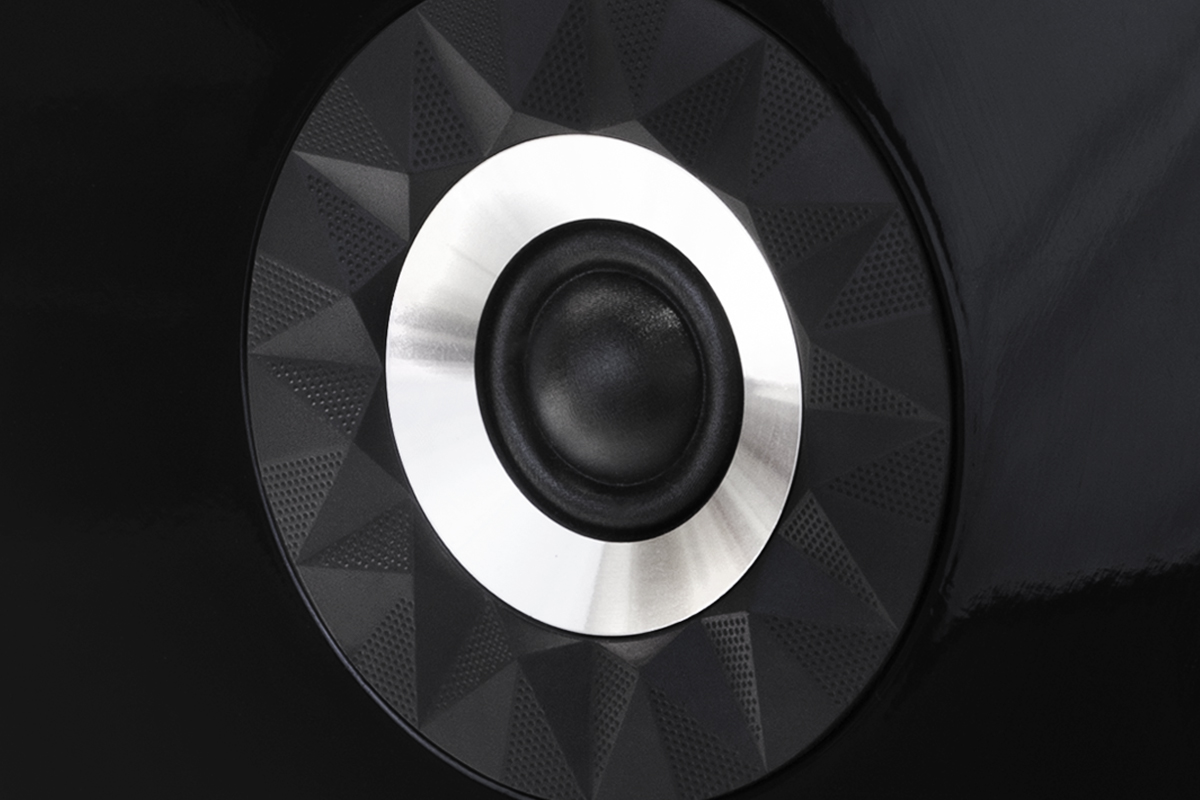
This little system would fit comfortably in a teenager’s bedroom, a student’s dorm room, or a young adult’s first apartment. But it could also serve as a secondary system in a den or home office.
Sonically, Elipson’s Facet Prestige 6B BT has a lot to offer—expansive soundstaging, precise imaging, and excellent detail. But given its voicing, it’s best suited for listeners who favor a lively presentation.
. . . Gordon Brockhouse
Associated Equipment
- Powered and active loudspeakers: Triangle Borea BR03 BT, SVS Prime Wireless Pro.
- Digital source: Google Pixel 4a 5G smartphone.
- Analog source: Pro-Ject Debut Evo turntable with Orotofon 2M Red cartridge.
- Network: Google Wifi four-node mesh network.
Elipson Prestige Facet 6B BT Powered Loudspeaker System
Price: $699.
Warranty: Two years, parts and labor.
Elipson
309 avenue du Général de Gaulle
94500 Champigny-sur-Marne
France
Phone: +33 (0)1 55 09 18 30
Email:
Website: www.elipson.com
North American distributor:
Gem-Sen Distribution
266 Applewood Crescent
Concord, ON L4K 4B4
Canada
Phone: (905) 660-3110
Website: www.gemsen.com



